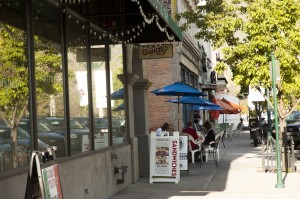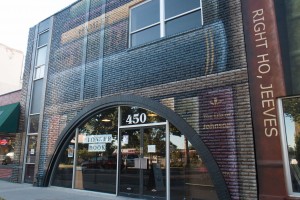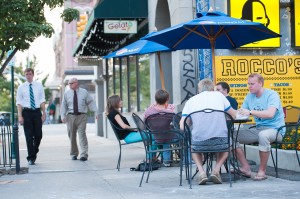
Provo City Council debuted a new app that allows residents to participate in the city’s rich history using new technology.
“What can we do to enhance our ability to honor and remember our history and let more people know what we have?” community development administrations director Gary McGinn asked during a Provo City Council work session on Sept. 1.
The “Provo Historic Tour” app has been presented as the solution.
The Android app was created by a UVU team in collaboration with the Provo Landmarks Commission, a body appointed by the mayor that is primarily responsible for identifying, registering and preserving Provo’s historical landmarks.
With increasing attention placed on the use of mobile phone technology, the commission brainstormed better methods of connecting Provo residents and visitors to their city’s unique heritage.
“There is a lot of richness surrounding us that isn’t necessarily (known) without this kind of aid,” community development planner Josh Yost said in the meeting.
Yost said as people become aware of history and the personal narratives intertwined into these sites, people will feel the existence of this history and hopefully gain a desire to learn more and advocate the cause of preserving more landmarks. The app is also a great tool for heritage tourism.
A drive through Provo Center Street is no longer just a trip down to Station 22 or Unhinged. The app transforms a Center Street walk into a historic journey through time, dating as far back as the late 19th Century.

The application shows the user their current location in Provo while simultaneously indicating 20 landmark sites. Each landmark virtually presents interactive photos, site descriptions and an audio narrative on the user’s phone.
All sites also show users a then-and-now visual, which allows them to swipe between an old photograph and a current image. The slide indicator, located underneath each visual, produces a cross-fade effect that allows the user to see the transformation of the landmark site.
Current users of the app have found it user-friendly and say it is an exciting way to learn more about Provo’s rich history.
Matthew Taylor, staff executive director on the Provo City Council and former member on the Landmarks Commission, uses the app and emphasized the value of its visual technology, calling it the most striking element in the application.
While the application is limited to Android users, there has been talk of modifying itfor Apple.
Yost told the council an estimated $5,000 is needed to create a functional application that is accessible to iPhones.

As far as spreading the news about the new app, advertising efforts for “Provo Historic Tour” has been slowed until the Landmarks Commission is confident the app is completely intuitive.
“It hasn’t been advertised yet because it doesn’t have all of the features that were in the original project proposal,” chair of the Landmarks Commission Susan Fales said during the meeting.
Prospective advertising actions include signage at the Provo City Center Temple open house, advertising efforts on the Downtown Provo Inc. website and the distribution of information pamphlets about the app at the Provo visitors bureau and the Provo Marriott hotel.
Future historic developments mentioned at the meeting include interactive pedestrian kiosks. These would provide a QR code at designated locations, allowing users to browse and download the app.
The “Provo Historic Tour” is currently available on Google Play, complete with sample pictures and a product description.




